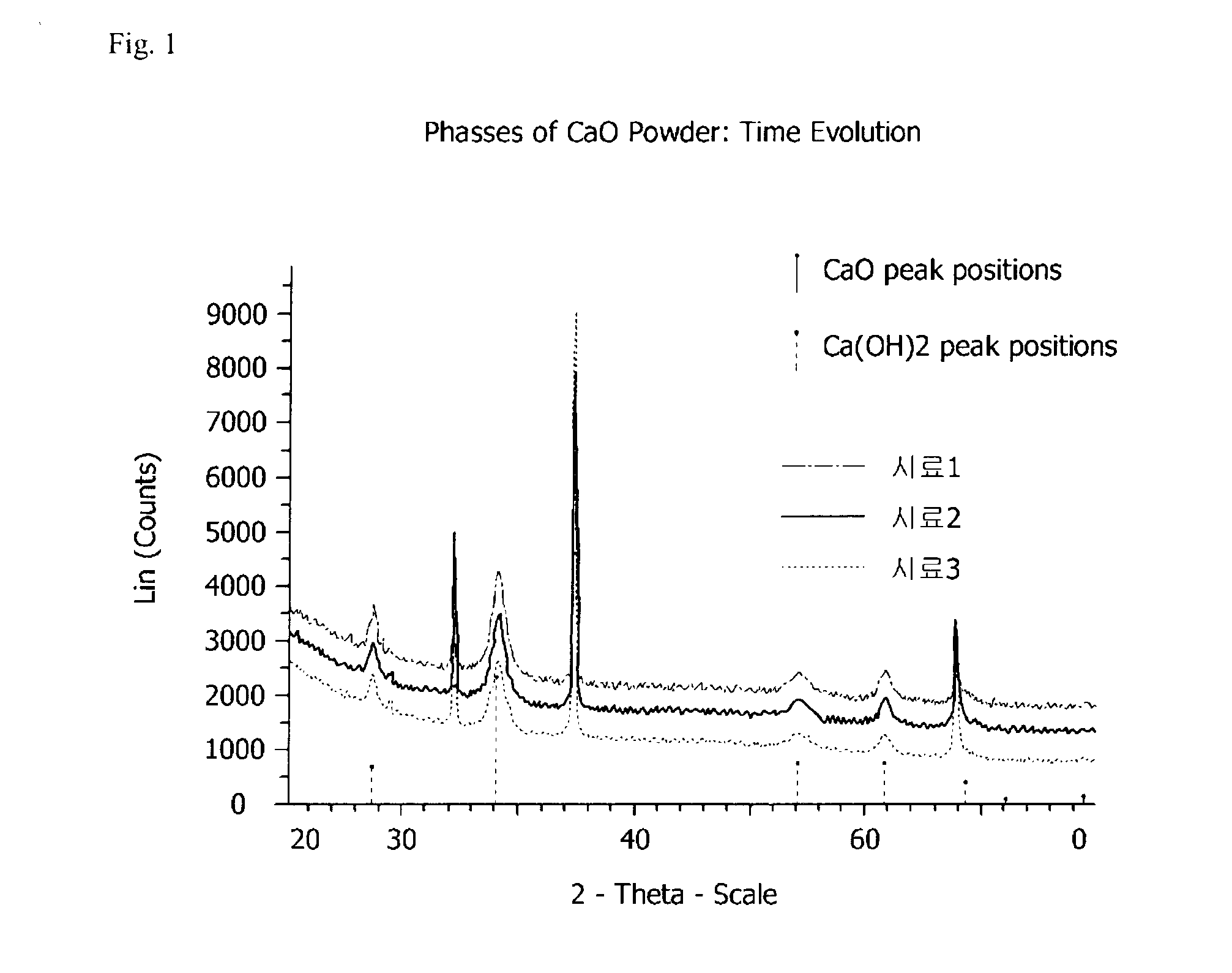Adhesive film and product for encapsulating organic electronic device using same
a technology of organic electronic devices and adhesive films, applied in the direction of film/foil adhesives, heat-activated film/foil adhesives, film/foil adhesives, etc., to achieve the effects of ensuring long-term reliability, enhancing temporal stability, and maintaining moisture resistan
- Summary
- Abstract
- Description
- Claims
- Application Information
AI Technical Summary
Benefits of technology
Problems solved by technology
Method used
Image
Examples
examples 1 to 3
1. Preparation of Adhesive Solution
[0101]A moisture absorbent solution was prepared by putting 70 g of CaO (Aldrich) as a moisture absorbent into methylethylketone at a concentration of 30 wt %, and milled by a ball-mill process for 24 hours. In addition, separately, 200 g of a silane-modified epoxy resin (KSR-177, Kukdo Chemical Co., Ltd.) and 150 g of a phenoxy resin (YP-50, Tohto Kasei Co., Ltd.) were put into a reaction vessel at room temperature, and diluted with methylethylketone. Afterward, an inside of the reaction vessel was replaced with nitrogen, and the prepared solution was homogenized. The moisture absorbent solution prepared beforehand was put into the homogenized solution, 4 g of an imidazole (Shikoku Chemicals Co., Ltd.) was added as a curing agent, and the resulting solution was stirred at a high speed for 1 hour, thereby preparing an adhesive solution.
2. Formation of Adhesive Film
[0102]An adhesive layer having a thickness of 15 μm was formed by coating the above-p...
experimental example 1
Confirmation of Moisture Resistance
[0105]A calcium test was executed to investigate moisture resistance of the adhesive film in each of Examples 1 to 3 and Comparative Examples 1 to 3. Particularly, 9 spots of calcium (Ca) were deposited to a size of 5 mm×5 mm and a thickness of 100 nm on a glass substrate having a size of 100 mm×100 mm, and a cover glass to which the adhesive film of each of Examples 1 to 3 and Comparative Examples 1 to 3 was transfer-printed was heat-compressed to each calcium-deposited spot at 80° C. for 1 minute using a vacuum press. Afterward, the resulting product was cured in a high-temperature drier at 100° C. for 3 hours, and an encapsulated calcium specimen was cut into a size of 11 mm×11 mm. The obtained specimens were left in an environment including a temperature of 85° C. and R.H. of 85% in a constant temperature and constant humidity chamber, and a point at which calcium started to become transparent by an oxidation reaction due to permeation of moist...
experimental example 2
Measurement of Temporal Change in Weight Increase Ratio
[0106]Weight increase ratios of the adhesive films of Examples 1 to 3 and Comparative Examples 1 to 3 were investigated. Particularly, the adhesive films of Examples 1 to 3 and Comparative Examples 1 to 3 were prepared to a thickness of 200 μm, cured in a high temperature drier at 100° C. for 3 hours, and cut to a size of 5 cm×5 cm, thereby preparing a sample. An initial weight of the cured sample was recorded, the sample was left in a constant temperature and constant humidity chamber at 85° C. and R.H. of 85% for 24 hours, moisture was removed from a surface of the sample, and a weight of the sample was measured. The weight increase ratio of the sample was calculated by the following equation, and is shown in Table 2.
Weight increase ratio (%)=(B−A) / A×100
[0107]In the above equation, B is a weight of the sample after moisture was absorbed, and A is an initial weight of the sample.
TABLE 2CategoryExample 1Example 2Example 3Weight ...
PUM
| Property | Measurement | Unit |
|---|---|---|
| temperature | aaaaa | aaaaa |
| storage temperature | aaaaa | aaaaa |
| storing temperature | aaaaa | aaaaa |
Abstract
Description
Claims
Application Information
 Login to View More
Login to View More - R&D
- Intellectual Property
- Life Sciences
- Materials
- Tech Scout
- Unparalleled Data Quality
- Higher Quality Content
- 60% Fewer Hallucinations
Browse by: Latest US Patents, China's latest patents, Technical Efficacy Thesaurus, Application Domain, Technology Topic, Popular Technical Reports.
© 2025 PatSnap. All rights reserved.Legal|Privacy policy|Modern Slavery Act Transparency Statement|Sitemap|About US| Contact US: help@patsnap.com

